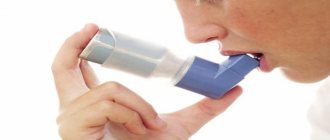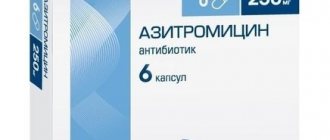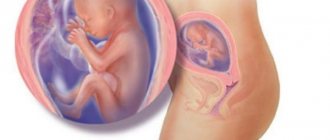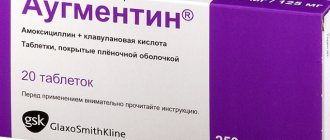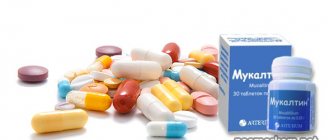Home » Acute bronchitis »
- For children
Mustard plasters are used for inflammatory processes in the respiratory system - bronchitis, tracheitis. They are easy to use, convenient, inexpensive and do not cause side effects. Since they are applied only externally, mustard plasters do not cause toxic effects on the body.
Glycosides and mustard oils have a local irritant effect, which puts the immune system on alert. Although official medicine does not have evidence of their effectiveness , this method is very popular among patients and doctors.
Types of mustard plasters. Release form
They can be factory-made or home-made.
This is a cheap and accessible drug, so it is better to purchase it at the pharmacy. This will help save time and prevent manufacturing errors. There are two forms of release. Namely:
- Plates
. They consist of a rectangular sheet of paper and a medicinal base. Mustard powder is attached to their surface using a contact gel lubricant. Standard size: 8 by 12.5 cm. - Packages.
They represent bags made of filter paper in which herbal medicinal raw materials are placed. They contain to a greater extent mustard cake and crushed seed kernels (up to 76%) and to a lesser extent powder (up to 24%).
There are packages that additionally include a small amount of eucalyptus oil (up to 1% of the entire mixture). The pharmacy chain offers balms and gels, but technically they do not belong to mustard plasters.
Some varieties labeled “for children” are produced, but there are no fundamental component differences from adults. The treatment regimen will vary in session duration.
Is it possible to put mustard plasters on for bronchitis?
Both adults and young patients are allowed to perform the procedure. It is important to remember that it is not suitable for all types of pathology.
For example, it is undesirable to carry out any procedures with mustard for obstructive bronchitis.
Against the background of this disease, the airways are prone to spasms and edematous. The application of plates or bags will, at best, be useless, and at worst, will lead to the progression of respiratory disorders.
It is permissible to use it for acute inflammation of the bronchi only during the recovery period, when the body temperature has returned to normal. For example, to cope with residual cough. Performing the procedure against the background of active inflammation will lead to a worsening of the condition.
The use of mustard powder is not prohibited for chronic bronchitis without obstruction. The procedure is also prescribed - only after overcoming the acute period.
Children are allowed, but there are age restrictions. The procedure cannot be used if the patient is less than 1 year old.
It is permissible for preschoolers to make mustard applications, but not recommended. Unpredictable side effects are possible when reflexogenic zones are irritated. Source: nasmorkam.net
How to make mustard plaster yourself?
If a child or adult is sick, and most of the symptoms, in particular cough, make themselves felt in the evening, mustard plasters may not be on hand. Therefore, it would be good to be able to do them yourself. To do this you need :
- Make a porridge mixture of mustard powder and warm water;
- put the pulp on paper rectangles and cover the top with the same pieces of paper.
In order not to injure the baby’s delicate skin , it is recommended to mix the powder with ordinary flour in a ratio of 1 to 2-3.
Children can sometimes have wraps. The procedure requires flannel fabric and requires the preparation of the following composition: 2 tbsp. spoons of powder per 1 liter of lukewarm water. Next, you need to moisten the fabric in the resulting liquid, squeeze it thoroughly and wrap the child in it and additionally cover it with a warm blanket.
The procedure takes about 5-7 minutes . After this, you need to unwrap the baby and thoroughly wipe it with warm water and dry it thoroughly. Injections for bronchitis for children are given only when the condition worsens, and the appropriateness of this method is determined by the attending doctor.
Do mustard plasters help with bronchitis?
Some patients believe that their main function during bronchitis is warming up. In fact, there is no reliable scientific evidence for this.
Mustard irritates the skin and leads to local hyperthermia. But this is not physically enough for the heat to spread deeply into the tissue underneath.
The presumed mechanism by which mustard facilitates the treatment of bronchitis is the activation of reflexogenic areas of the skin. This is believed to improve blood flow in the lungs and speed up the progression of the disease.
Mustard applications are a popular technique, but outdated. It can be used, but only against the background of full-fledged primary therapy and used as an additional treatment for a speedy recovery.
Contraindications. When should you stop using it?
The procedure is not suitable for all patients. Main restrictions:
1
Hypersensitivity. Mustard is a fairly strong allergen that can cause both a local reaction (urticaria) and a systemic reaction (anaphylactic shock, Quincke's edema). At the slightest suspicion of a possible atypical response, it is better not to put mustard plasters on any part of the body for bronchitis.
2
Skin damage. Mustard can cause an unbearable burning sensation in the area of cuts and abrasions.
3
Skin diseases. For example, atopic dermatitis, eczema. Applications can aggravate the course of psoriasis. Do not apply to pustular lesions (it may increase inflammation and spread infection).
4
Hyperthermia. Allyl ether at elevated temperatures will intensify already acute inflammation. This can lead to disruption of the adaptation mechanisms of the sick organism.
5
Neoplasms. An increase in blood flow can accelerate the growth of a malignant tumor and provoke metastasis. You cannot bet directly on benign formations.
6
Age up to 1 year. You can get a chemical burn to the skin. Children have imperfect thermoregulation, so applications can lead to dangerous overheating of the body.
These contraindications applied only to mustard (powder, cake). If the composition includes eucalyptus oil, then the list of restrictions will be supplemented by a tendency to bronchospasm.
Remember
Inhaling mustard oil vapors is dangerous for children with bronchial asthma and can cause suffocation due to laryngitis. If present, refuse any procedures with mustard.
Possible side effects from use
Complications usually occur locally, at the site of application. These include an allergic reaction and an unbearable burning sensation. If the technique is violated, a chemical burn is possible.
What contraindications exist
Despite the natural composition of mustard plasters, their use is not permissible in all cases. Warming in this way is prohibited for women during the period of bearing a child, since the composition can increase uterine contractions, which can provoke premature birth. During breastfeeding, it is prohibited to use applications to warm the breasts, but patches can be used on other parts of the body. Warming should not be used to treat children under 2 years of age.
Contraindications to the use of the patch are:
- presence of skin damage;
- for dermatological skin pathology;
- when signs of intoxication of the body appear;
- severe paroxysmal cough, which cannot be reduced for a long time;
- tendency to allergic reactions, intolerance to the components of the product;
- diseases of the cardiovascular system;
- elevated body temperature more than 38 ⁰C;
- bronchial asthma;
- formations of a malignant nature.
Mustard applications are allowed in the initial stages of tracheitis. With the development and complication of the disease, their use is permissible only in conjunction with complex therapy. It is necessary to obtain doctor's recommendations regarding the use of antitussive and expectorant drugs, as well as the possibility of using mustard plasters. Mustard plasters should not be used for purulent angina, as this will result in accelerated development of pathogenic microflora and a person’s well-being will deteriorate.
Side effects when using this method of heating are rare. If the body reacts strongly in the form of unbearable itching or burning, it is necessary to stop the therapy. To avoid burns, the plates are not placed in places with close capillaries on the skin surface.
When using mustard plasters in children, you must make sure that the child is not allergic to the components of the composition. The duration of the procedure for children aged 2 to 6 years should not exceed 3 minutes. To treat children, you cannot use more than 4 mustard plates when applying to the back. After the end of the session, it is recommended to apply regular baby cream or moisturizer to the area where the patch comes into contact with the skin. Do not treat the area where the compress is applied with alcohol-containing substances.
Precautionary measures
To avoid unwanted effects, you must follow several rules. Mustard applications should cause a feeling of warmth and a slight burning sensation. If the procedure causes severe discomfort, it should be stopped immediately.
Do not exceed the recommended time. Mustard should come into contact with the skin of adults for no more than 10-15 minutes.
Can only be applied to intact skin.
Do not place nevi (moles) on the spine. It is prohibited to apply to the area of the mammary glands and nipples, as well as over the heart.
Some sources write that if the skin is sensitive, then it is advisable to put the plates on the reverse side. The second solution to the problem is to place thin paper or gauze. In fact, in such situations it is better to abandon this manipulation altogether (it won’t be worse without it).
Mustard plasters for bronchitis: where to put for an adult?
Before use, you should ensure the suitability of the medicine. The active powder has a pungent mustard odor. The plant base should not fall off the plate.
Applications can be installed on the back and front surface of the chest. You should be aware of places to avoid.
For adults, it is applied to the area of the shoulder blades and slightly below. On the front surface of the chest, plates and packages are placed under the collarbones.
How to properly place mustard plasters for bronchitis? Technique:
- Place the patient on his stomach on a flat surface. For better contact with mustard plasters, moisturize the skin.
Where to put: photo
- Place the bags and plates in a bowl of water for 10-20 seconds. This is necessary to release the essential allylic oil. The optimal temperature is 37 °C. If it is higher than + 45 °C, the active substance will be destroyed.
- Set mustard applications. Cover the top with a dry cloth and a warm blanket. For greater efficiency, you can use plastic film.
- Monitor the progress of the procedure. The condition of the skin is checked every 2-5 minutes.
- Complete the manipulation. How long to keep? No more than 15 minutes until persistent redness appears. If an unbearable burning sensation occurs, stop the procedure immediately.
- Cleanse the skin. The application area is carefully wiped with a damp, then dry cloth.
After application, it is recommended to lie under a blanket for 1-2 hours. For bronchitis, mustard plasters can be applied, alternating areas of the body. For example, first place them on the area of the shoulder blades, then on the front surface of the chest.
Common Questions
How often can I bet? No more than 1 time per day. Increasing the frequency of procedures is inappropriate, since it does not lead to a significant increase in the effect.
How many days should the treatment be carried out? No more than 4-5. Longer therapy may result in a visit to the dermatologist due to severe skin irritation.
Is it possible to get by with mustard plasters only? It is forbidden. This is an auxiliary method and is not useful as a stand-alone measure.
More on the topic: How long to keep mustard plasters? How many times can you bet?
How to apply mustard plasters for coughs? Instructions. For children and adults
Features of application
In order not to cause harm to the patient, you should know how to properly apply mustard plasters at home for bronchitis in children and adults. Usually the location for applications and the frequency of the procedure are recommended by the doctor, taking into account the patient’s condition, age and individual characteristics of the body.
Before applying mustard plasters for bronchitis, it is important not only to learn how to do it correctly, but also to make sure there are no contraindications. If during the procedure a strong burning sensation is felt at the site of the compress or general health worsens, then immediately remove the mustard plasters and wipe the body with a damp towel.
If during the procedure a strong burning sensation is felt at the site of the compress or general health worsens, then the mustard plasters are immediately removed and the body is wiped with a damp towel.
To prevent the development of an allergic reaction, a mustard sensitivity test is performed before the first use. Cut a small piece from a whole leaf, dip it in water and place it on your wrist.
After 7 minutes, the skin is removed and checked: if slight hyperemia is observed, then the bags can be used without fear. If severe redness is detected, it is better to abandon this method of treatment.
To apply mustard plasters for bronchitis in adults or children, you need to prepare:
- a bowl of not very hot water, the temperature of the liquid should not be higher than 40-45 ° C;
- sheet;
- waffle towel;
- warm blanket or woolen scarf;
- gauze.
The process then proceeds according to the following algorithm:
- bags of powder are dipped into water. Leave to soak for 2-5 minutes;
- After shaking the applicators, they are placed on the desired areas of the body. Do not place the sheets too close to each other;
- the patient is covered with a towel, then wrapped in a blanket or blanket;
- after 5-12 minutes, the mustard plasters are removed;
- wipe the body with a damp, clean cloth, this is necessary to remove any remaining powder, then dry the skin with a towel.
It is better to perform the procedure before going to bed. If it is done during the day, then you cannot go outside for 2-3 hours after this; it is better to spend this time in bed, under the covers.
If treatment is carried out in children, then the degree of redness of the skin should be monitored every 1-2 minutes. In case of severe hyperemia, the procedure is completed, even if the time has not yet expired.
Irritated skin can be lubricated with baby moisturizer. To avoid complications, babies are given applications through gauze or thin cotton fabric.
You need to keep the applicators on the skin for no more than the prescribed time, which depends on your age. They can be removed earlier, but not later. If you overdo it, a burn will remain, and the patient’s condition will only worsen.
This rule also applies to how many times mustard plasters are applied for bronchitis. For children, the procedure is performed every other day, alternating location zones. The full course includes 7-10 applications.
Adults can apply compresses with mustard daily for 3 days, then the skin is allowed to rest for several days and the course is completed with several procedures. Both children and adults should make 1 compress per day.
Where to put the child? Which is correct?
The basic preparatory steps differ little from the standard ones. Do not apply to the spine or heart area. Placement of installation: the area of the shoulder blades, under the collarbones.
You cannot place on several zones at the same time. One day you can stick it on your back, and on another - under your collarbones.
Mustard plasters for bronchitis in children can be placed on the legs. For example, on the area of the calf muscles.
How to keep it on time? The procedure can last 2-5, but no more than 10 minutes.
The main landmark that indicates the end of the procedure is the appearance of persistent hyperemia. Monitoring when applying applications to children should be carried out every 1-1.5 minutes. The child must be constantly monitored, as he may touch the powder and then begin to scratch his eyes.
Pediatricians' opinion
E.O. Komarovsky is skeptical about mustard applications, wraps and baths. He believes that in the treatment of inflammation of the bronchial tree it is better to resort to more effective therapeutic methods.
It is better to show the child to the pediatrician in time than to do mustard plasters for bronchitis yourself, ignoring basic measures.
According to Dr. Komarovsky, they are not able to independently cure any serious pathology. And if they helped, then the disease could initially be eliminated without applications.
To help parents: How to treat a wet cough in a child? Without and with fever
Cough at night in a child: causes and treatment. How to calm down?
Bronchitis - what is it
Bronchitis develops against the background of swelling and inflammation in the bronchial mucosa . At this time, a person first develops a dry and then a wet cough. At this time, we can talk about an acute form of the disease. To prevent it from becoming protracted or chronic, timely treatment is necessary.
Causes
Most often, seasonal bronchitis develops due to the activity of viruses and bacteria. In addition, the disease can occur as a concomitant of tracheitis, laryngitis, whooping cough, measles or influenza.
Types of bronchitis
Firstly, bronchitis is divided into a primary form, which occurs as an independent disease, and a secondary form, which appears against the background of the underlying disease. Bronchitis is also divided according to its course into the following forms:
- Spicy.
- Chronic, develops if appropriate treatment of the acute form has not been carried out.
- Catarrhal bronchitis is one of the most advanced types of the disease.
- Chlamydial species appears due to the activity of chlamydia bacteria.
- Infectious or toxic bronchitis often develops against the background of influenza and colds.
- Obstructive or spastic bronchitis is characteristic of childhood.
- Occupational bronchitis often occurs due to dust; miners, chemists, metallurgists and hairdressers often suffer from it.
- Smoker's bronchitis.
Symptoms
Bronchitis is accompanied by the following symptoms:
- Increased body temperature.
- Appearance of weakness and lethargy.
- The patient becomes temporarily unable to work.
- The appearance of a dry cough, which gradually becomes wet.
- Sometimes shortness of breath develops, especially with obstruction.
Can pregnant women take mustard plasters for bronchitis?
Not a single official study has been conducted on the safety of the drug in question during pregnancy. For this reason, it is better to avoid it at least in the 1st trimester of pregnancy.
Is it possible or not to use mustard in later stages? For greater safety, it is recommended to abstain from it for the entire period of pregnancy. This treatment is not so necessary that it exposes the fetus to unreasonable risk.
At the slightest symptoms of respiratory pathology, it is better to immediately consult a doctor. He will help you choose a therapeutic regimen with drugs allowed during pregnancy.
How to replace mustard plasters for bronchitis?
Other warming and locally irritating drugs can serve as an alternative. These can be not only patches, but also balms.
Gel “Mustard Forte”
Declared by the manufacturer as a safe analogue. The composition includes not only mustard, but also other components. Local irritant effect is enhanced by capsicum.
Includes lavender and sage essential oils. They reduce the irritating effect of other components.
Contains eucalyptus essential oil. For this reason, they should warm up with caution if they are prone to bronchospasm.
The rules of use are relatively simple: the gel is applied to the skin with massage movements, then the corresponding area is insulated. The warming effect lasts up to 8 hours. Does not require rinsing. [ads-pc-1][ads-mob-1]
Pepper patch
Has a local distracting, irritating effect. In addition to thick pepper, it contains belladonna extract. It has a slight antispasmodic effect.
Also includes arnica, rubber, lanolin. It has a specific smell due to pine rosin.
Apply to dry skin, which has been previously degreased. This can be done with alcohol or cologne.
An important difference is that the patch cannot be removed for 2 days. In case of severe burning, the skin is treated with Vaseline.
Compresses
You can apply mustard plasters for bronchitis, or you can replace them with compresses. They have a more pronounced warming and less distinct irritating effect. They are dry and wet.
The most popular wet compress for respiratory diseases is an alcohol compress. What is important to know during installation? It is absolutely contraindicated for young children.
Dry compresses are a safer alternative. One of these is saline.
To make it, table salt is heated in a frying pan. It is poured into a fabric bag, then applied to the desired area. It is important to ensure that the salt is not too hot.
More folk remedies: Sugar with onions for coughs: a recipe for children and adults. Reviews
Cough compresses for children: all recipes. Methods of application
Banks: are they a good alternative?
Some patients think that cupping is better. It's a delusion.
It is believed that due to the vacuum effect there is a sharp increase in local blood flow. This leads to damage to microvessels. Theoretically, the result should be immune activation.
In fact, the positive effect of cans remained at the level of assumptions and reasoning. On the contrary, their installation leads to disruption of the trophism of surrounding tissues. In severe cases, this provokes necrosis in the places where cupping is applied.
Preparation of mustard plasters and their use
The best option is for one of your relatives to help you apply this product, since even for an adult patient it is not very convenient to position the product correctly.
This procedure is performed according to the following scheme:
- The patient assumes a horizontal position.
- The assistant wets the mustard plaster in previously prepared warm water, in which the mustard layer should soak in 1-2 minutes.
- The patch is applied to the selected area of the body.
- Next, the areas on which mustard plasters are applied are covered with a warm cloth, terry towel or woolen scarf.
Carefully! Some patients have skin that is too sensitive to tolerate even a minimal amount of time using mustard plaster. In such cases, before using the product, a piece of thin cloth soaked in water is first applied to the skin, and mustard plaster is placed on top of it.
In such cases, before using the product, a piece of thin cloth soaked in water is first applied to the skin, and mustard plaster is placed on top of it.
After the procedure, the areas on which the medicine was applied can be wiped with a damp towel, making gentle movements.
This will help soothe the skin and at the same time remove any remaining mustard powder. Additionally, these areas can be lubricated with cream or Vaseline.


